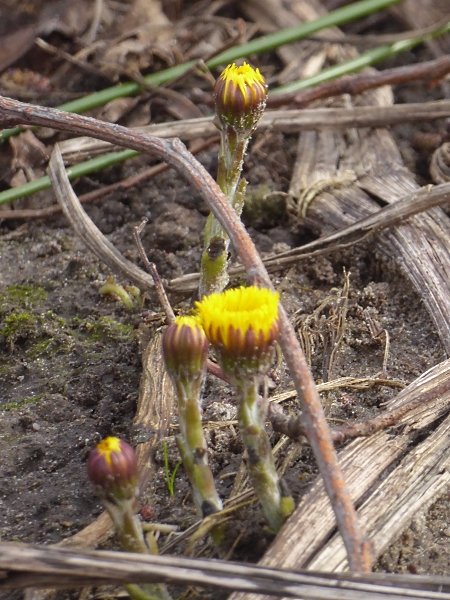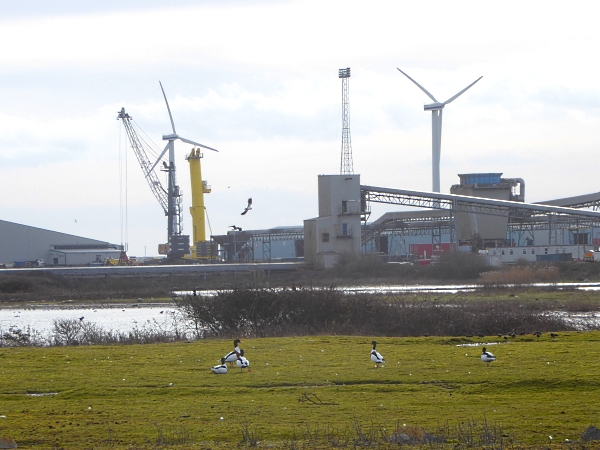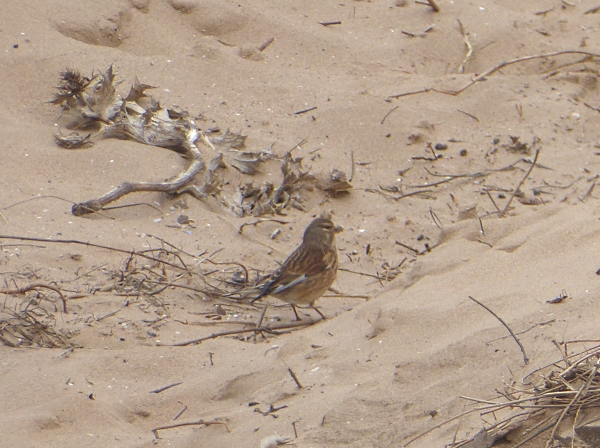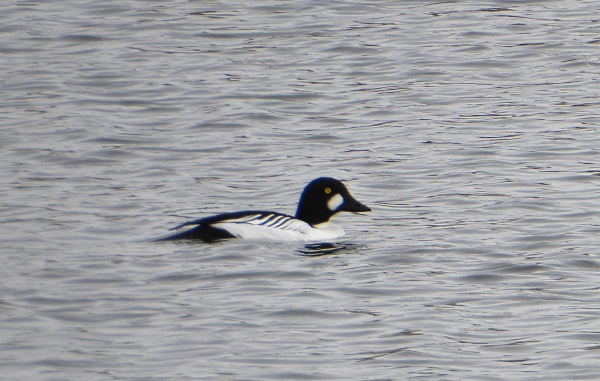This was an MNA midweek short walk, starting at Waterloo station at 11am. Unfortunately Merseyrail are working on the platforms, trains are off, so would anyone brave the Rail Replacement bus and come out? Yes, there were eventually six of us, Jim, John, Barbara (me), Dave, Robert from the LBS (botanists) and Val. We walked down South Road and through Marine Gardens, where our first bird was a Collared Dove. Blackbirds and a Robin in the shrubbery and plenty of Snowdrops and Crocuses coming out. In an odd corner south of the Lakeside Adventure Centre and the Marina Club there is a pocket-sized nature reserve, with boardwalks through marshy reeds. We looked for frogspawn but there was none to be seen. Alder catkins were opening and we spotted the first Coltsfoot of the year

A Raven flew over, mobbed by crows. An Oystercatcher flew past. Two Cormorants were diving in the Marine Lake. A very dark Lesser Black-backed Gull perched high on a scaffolding structure in the lake, probably the Baltic subspecies. We peered through the fence to the Seaforth Nature Reserve, seeing Rabbits, Lapwings, Common Gulls, Canada Geese, Pied Wagtail, Black-tailed Godwits, Teal, some Magpies on the fence, one Curlew walking on the grass and a group of Shelduck.

Then we strolled northwards along the prom, past the Iron Men on the beach. Something was hovering over the sand. Was it a Kestrel? When it came nearer we saw it was a Cormorant! Was it really hovering or was it flying directly towards us and only seemed to be imitating a Kestrel? The resident Skylarks were tweeting softly in the dunes, but when the sun came out three took to the air at once. We went to look at the clump of the very rare plant, the Dune Wormwood, Artemisia campestris ssp. maritima. It wasn’t very impressive, I have to say, but it is the star of this week’s “Sefton Coast” column in the Midweek Visiter newspaper. It is only found in two places in the UK, and Crosby is one of them. The other is on the Glamorgan coast.
In a sandy gully we spotted a little pinkish Dunnock-like bird, pecking about on its own. We considered a Twite, got the book out, and decided it was probably a female Linnet. You don’t often see one of those on its own.

We returned alongside the Boating Lake, noting the usual birdlife – Canada Geese, Mallards, Black-headed Gulls, several young Herring Gulls, two Common Gulls, Starlings, Carrion Crows, seven Mute Swans and a handful of Tufted Duck. To our surprise there was also a pair of Goldeneye, diving to feed.

We finished at just after 1pm, having walked 2.5 miles.
If you are interested in the wildlife of the north-west of England and would like to join the walks and coach trips run by the Merseyside Naturalists’ Association, see the main MNA website for details of our programme and how to join us.
